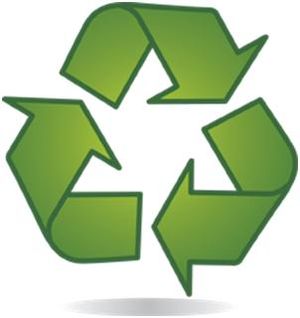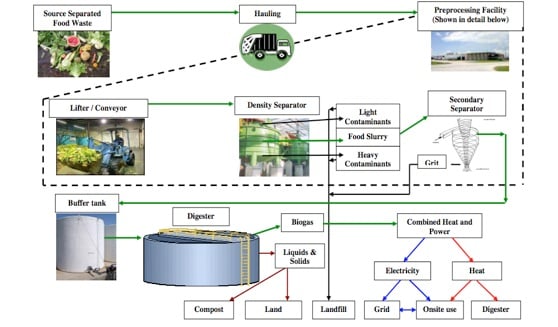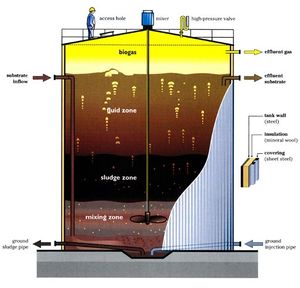
Introduction
In 2010 HSU disposed roughly 900 tons of waste a year, some of which can be diverted from the landfill to meet Assembly Bill 341’s requirement of 75% diversion by year 2020. To meet that goal, the campus is aggressively looking for more ways to reduce, reuse, and recycle. This project is intended to create a possible solution for diverting additional waste from the landfill in order to meet this goal. We have a unique situation as Humboldt County’s, Cummings Road Landfill located on Pine Hill in Eureka, CA was capped and closed at 1,825,212 tons of waste in 2000 [1]. Consequently, all waste generated is now trucked an average of 187 miles (380 miles round trip) out of county to the Dry Creek Landfill in White City, Oregon or to the Anderson Landfill outside of Redding, CA [2]. The cost of transportation in diesel fuel and the external costs in GHG’s are significant. Roughly 100,000 tons of waste is transported out of Humboldt County per year, generating 4,484 Metric Tons in GHG’s [3]. Landfills themselves are a source of Greenhouse Gas emissions, which include Carbon Dioxide (CO2), Methane (CH4), and Nitrous Oxide (N2O). Most of these GHG emissions are produced from organic material breaking down under anaerobic conditions, while other forms of solid waste do not produce GHG’s because they are not composed of carbon [4]. Paper towels are included as a type of “organic waste”, making them a viable target for reducing GHG at the landfill and in transportation. As an early adopter to the HWMA pilot study the Department of Sustainability along with Waste Reduction and Resource Awareness Program(WRRAP) will be collecting food waste from two main cafeterias to determine the mass and volume generated on campus. The data will help as HWMA is preparing to bring a municipal anaerobic digester online as early as January 2012.


Anaerobic digestion is the decomposition of organic matter by microorganisms in an oxygen free (anaerobic) environment, creating biogas, residual solids and liquids [5] The biogas will be used to power the actual digesting plant, thereby reducing HWMA’s dependence on electricity and their Greenhouse Gas Emissions (GHG’s). The residual solids and liquids are nutrient-rich and valuable soil amendments, with the possibility of providing an additional source of revenue for the facility [6].
For more information see Anaerobic digestion wiki.
Current Paper Waste Diversion Programs
There are many institutions such as schools, companies, and municipalities that have incorporated a paper towel diversion program. The following institutions reduce their solid waste by 'composting' their paper towels:
- American University, Washington, D.C.
- Parliment Hill, Ottowa, Ontario, Canada
- University of Californaia, San Fransisco
- Royal Roads University, Victoria, British Colombia.
Many anaerobic digestion technologies are commercially available and have been demonstrated for use with agricultural wastes and for treating municipal and industrial wastewater. There are very few examples of institutions utilizing municipal 'anaerobic digesters':
- [University of California, Berkeley]
Project Goals
Our overarching strategic goal is to simply reduce the amount of waste being generated on campus and transported long distances to the landfill. This will in turn, reduce the GHG emissions associated with HSU and hopefully complement the future food waste-composting program being studied. Many stakeholders, including HSU, the campus Sustainability Department, WRAAP, and HWMA, share this goal.
In order to meet our strategic goal, we need to implement several programmatic goals or objectives. The following is a comprehensive list of what these goals are in chronological order:
- Develop and maintain relationships with all stakeholders.
- Research existing policy framework and determine if paper towels can be legally composted in the county.
- Research similar programs at other colleges.
- Research the type and brand of paper towels currently being used on campus and determine if they are an efficient feedstock for an anaerobic digester.
- Observe custodians during work and discuss issues and troubleshoot obstacles pertaining to collection methods.
- Perform a baseline study of current paper towel waste generation in a random sample of bathrooms on campus on campus to determine estimates of volume and weight.
- Perform a behavior change study to determine how well students are informed and can comply with a possible bathroom towel waste-composting program.
- Compile an organized planning document for future students to use to implement the actual paper towel waste composting program in the future
To gain support for our project we would like to prove that it could be successful by achieving a 70% decrease in contamination in our paper towel collection bins.
Implementation
This project is a three phase process, each phase lasting one semester. Our portion of the project was the begging Phase: Phase one.
- Research existing paper towel diversion programs
- U.C. Berkeley
- Santa Clara State University
- Schedule meetings to determine feasibility, legality, and logistics.
- Office of Sustainability.
- Humboldt Waste Management Authority.
- Humboldt County Environmental Health.
- Facilities Manager and Custodians.
- Begin Data Collection
- Sample gallery
-
Sample caption text.
-
More sample caption text. This would look better with different images. :)
-
Even more sample caption text.
next level heading
You may need deeper level headings. Just keep adding equal signs to get that.
Costs
You may describe your costs here.
| header 1 | header 2 | header 3 |
|---|---|---|
| row 1, cell 1 | row 1, cell 2 | row 1, cell 3 |
| row 2, cell 1 | row 2, cell 2 | row 2, cell 3 |
See Help:Tables and Help:Table examples for more.
Discussion
Your discussion.
Next Steps
The next steps.
Conclusions
Your conclusions.
References
Contact details
Add your contact information.
